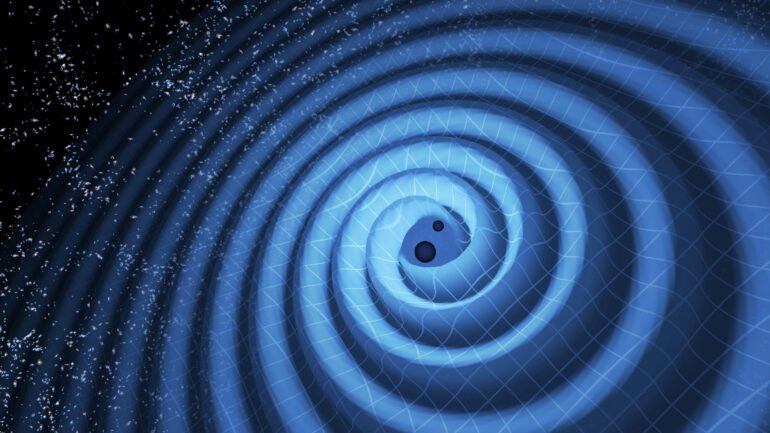TL;DR:
- AI revolutionizes physics by enabling precise modeling, data analysis, and discovery of hidden patterns.
- Deep learning within AI autonomously extracts complex features and correlations, advancing research.
- AI enhances computational physics, aiding in numerical simulations and accelerating experiments.
- AI contributes to quantum physics and computing, advancing quantum system design and algorithms.
- High-energy and particle physics benefit from AI’s data analysis capabilities, uncovering new phenomena.
- AI promotes interdisciplinary collaboration, merging physics with biology and chemistry.
- Challenges include data handling, model validation, and algorithm optimization.
- Collaboration between physicists and AI experts is crucial for future advancements.
- Gravitational wave research also leverages AI for efficient data processing and analysis.
Main AI News:
In the realm of natural sciences, physics reigns supreme as it delves into the fundamental laws governing our universe, encompassing matter, energy, mechanics, and motion. Through precise mathematical modeling, physics unravels the mysteries of nature.
However, as science and technology continue their relentless advance, propelled by the rapid growth of Artificial Intelligence (AI), physics faces both novel challenges and unprecedented opportunities. The integration of AI is poised to revolutionize the research methodologies and developmental trajectories within the field, ushering in a new era of progress and innovation.
AI stands as a potent ally for physicists, enabling the construction of intricate and precise models, as well as facilitating the analysis and interpretation of experimental data garnered from observations. Notably, within AI, deep learning emerges as a formidable tool, distinguished by its autonomy, discerning features that even elude human comprehension. Unlike traditional machine learning, which necessitates explicit feature delineation, deep learning autonomously extracts distinctive patterns, thereby enabling sophisticated tasks.
This autonomous capacity operates by feeding the algorithm a set of training data along with expected outcomes. The algorithm then iteratively refines itself through mathematical computations until it attains an acceptable level of accuracy. Once tuned, it can categorize unknown images without human intervention, shedding light on previously concealed patterns and correlations within vast datasets, thereby aiding physicists in comprehending and predicting related phenomena.
AI extends its reach into theoretical and computational physics, enhancing the efficiency and precision of computational models and techniques. By leveraging machine learning’s predictive prowess, AI not only excels in classification but also excels in numerical forecasting, particularly valuable in expediting experiments and calculations, especially in fields like finance.
In the domains of quantum physics and quantum computing, AI plays a pivotal role. Quantum physics investigates the behavior of subatomic particles and the laws of quantum mechanics, while quantum computing exploits quantum mechanical properties for information processing. AI assists physicists in designing intricate quantum systems and algorithms, thus catalyzing advancements in computer science.
Furthermore, AI’s contributions extend to high-energy physics and particle physics, illuminating the study of microscopic particles’ structures, interactions, and the universe’s origin and evolution. AI aids in the analysis and processing of voluminous experimental data, facilitating the discovery of potential new particles and physical phenomena.
The integration of AI technology optimizes physics research, expediting scientific inquiry by unraveling hidden patterns and correlations within extensive datasets. It also furnishes physicists with more precise and comprehensive models, empowering them to tackle increasingly complex scientific challenges.
Traditionally rooted in established theories and experiments, physics research now ventures into uncharted territories under the influence of AI. AI’s ability to unearth patterns and correlations within colossal datasets inspires physicists to formulate fresh hypotheses and theories, fostering progress and innovation.
AI’s exploration extends into uncharted fields and phenomena, extending the boundaries and depths of physics research by analyzing and extracting insights from vast datasets.
Moreover, AI’s advancement fosters interdisciplinary collaboration, enabling physics to merge seamlessly with other domains. The synergy of AI and biological sciences aids in studying intricate biological systems, while the fusion with chemistry delves into molecular structures and chemical reactions.
Nevertheless, AI’s journey in physics research faces its share of challenges, including data acquisition and processing, model creation and validation, and algorithm selection and optimization. The proliferation of deep learning is primarily attributed to the abundant data available thanks to the internet and hardware advancements, leading to the “democratization of deep learning.”
The future hinges on collaborative efforts between physicists and AI professionals to surmount these challenges and harness this transformative technology to advance physics research and applications.
In summary, Artificial Intelligence stands as a transformative force, reshaping traditional physics by empowering physicists to construct more intricate models, analyze complex experiments and observational data, and accelerate the pace of research and innovation. While challenges persist, the future promises deeper integration of AI into physics research, offering unprecedented opportunities and stimulating further development and innovation.
AI technology also finds its place in the realm of gravitational wave research, as evidenced by the 2017 Nobel Prize in Physics awarded to Rainer Weiss, Barry C. Barish, and Kip S. Thorne. Their pioneering work in detecting gravitational waves from the merger of two black holes marked a watershed moment in astrophysics, made possible through the application of AI and sophisticated data processing techniques.
The intricacies of capturing gravitational waves, with LIGO’s data sampling rate exceeding 16,000 times per second across tens of thousands of channels, present a monumental data processing challenge. Here, AI, including machine learning, emerges as an indispensable tool, promising to enhance research efficiency and our understanding of the cosmos.
Conclusion:
The integration of AI into physics research unlocks unprecedented opportunities for innovation and efficiency. This technological synergy has the potential to drive advancements not only in physics but also in various markets by enhancing data analysis, modeling, and problem-solving capabilities. Businesses should consider investing in AI technologies to stay competitive in this evolving landscape.

